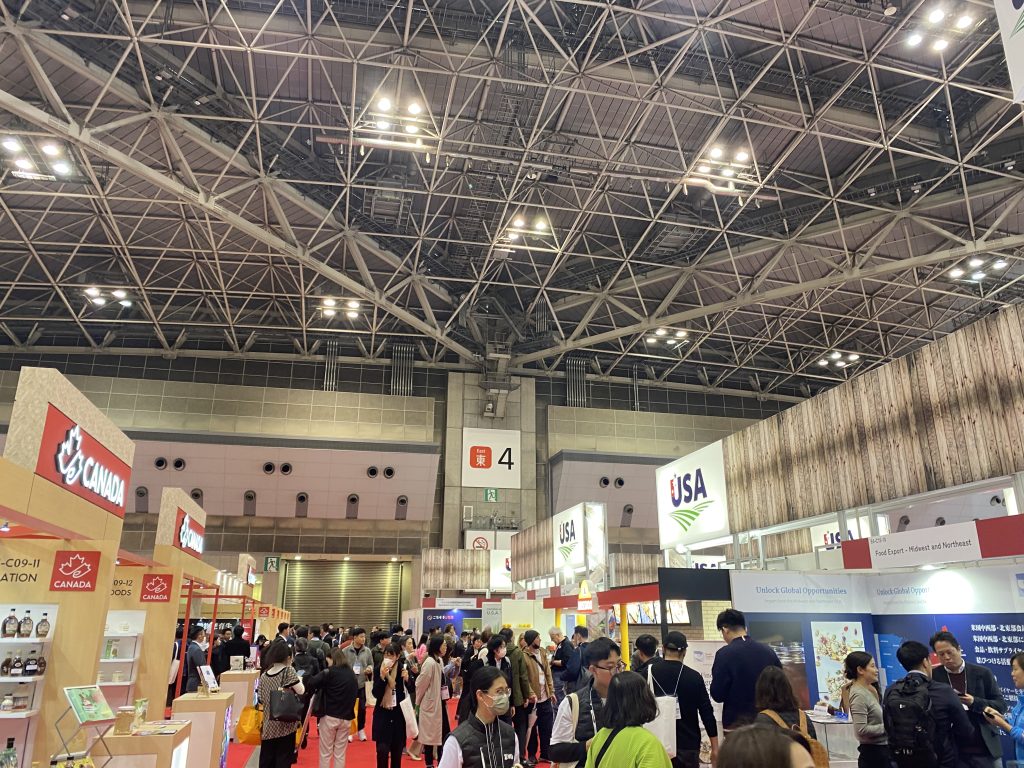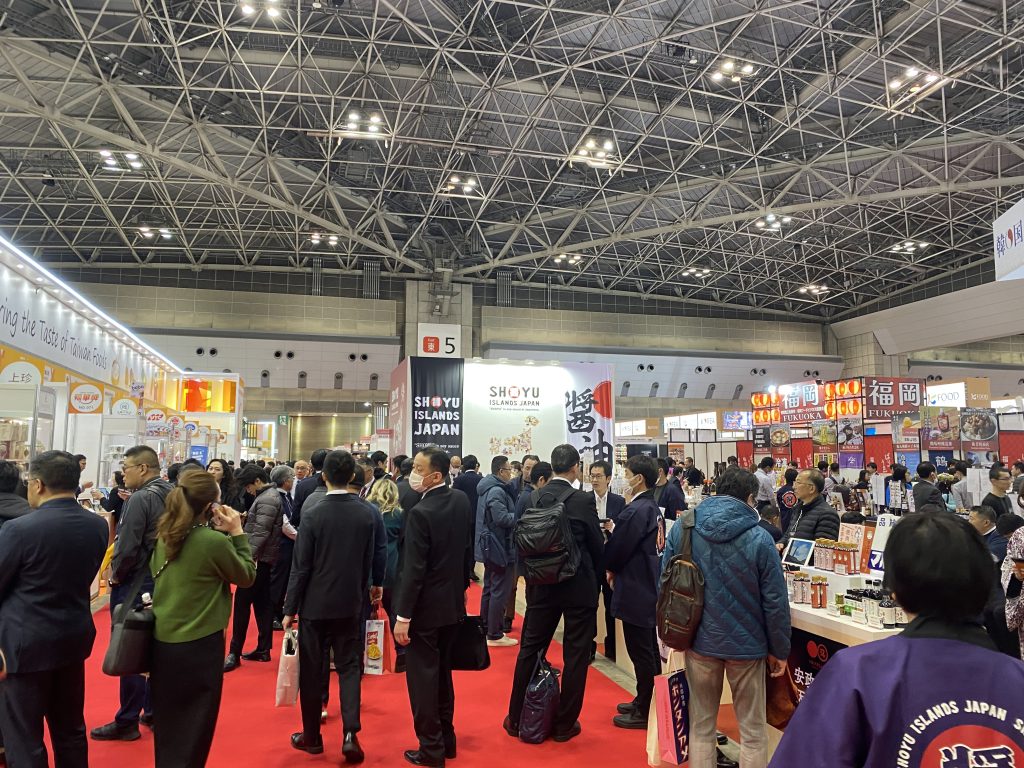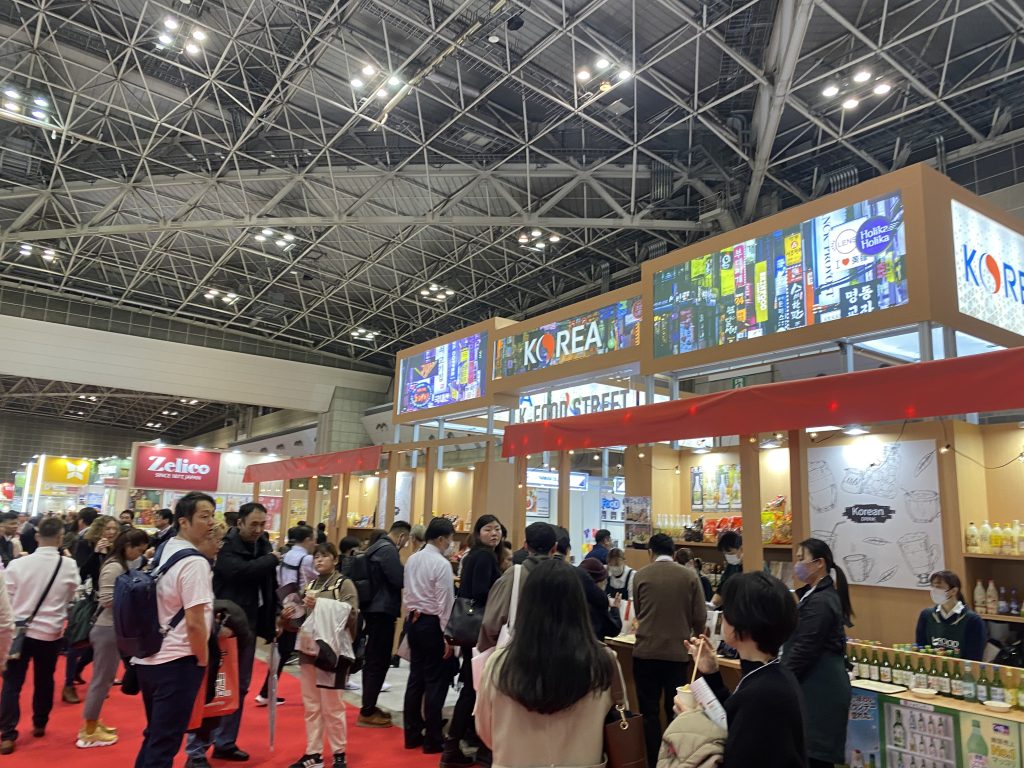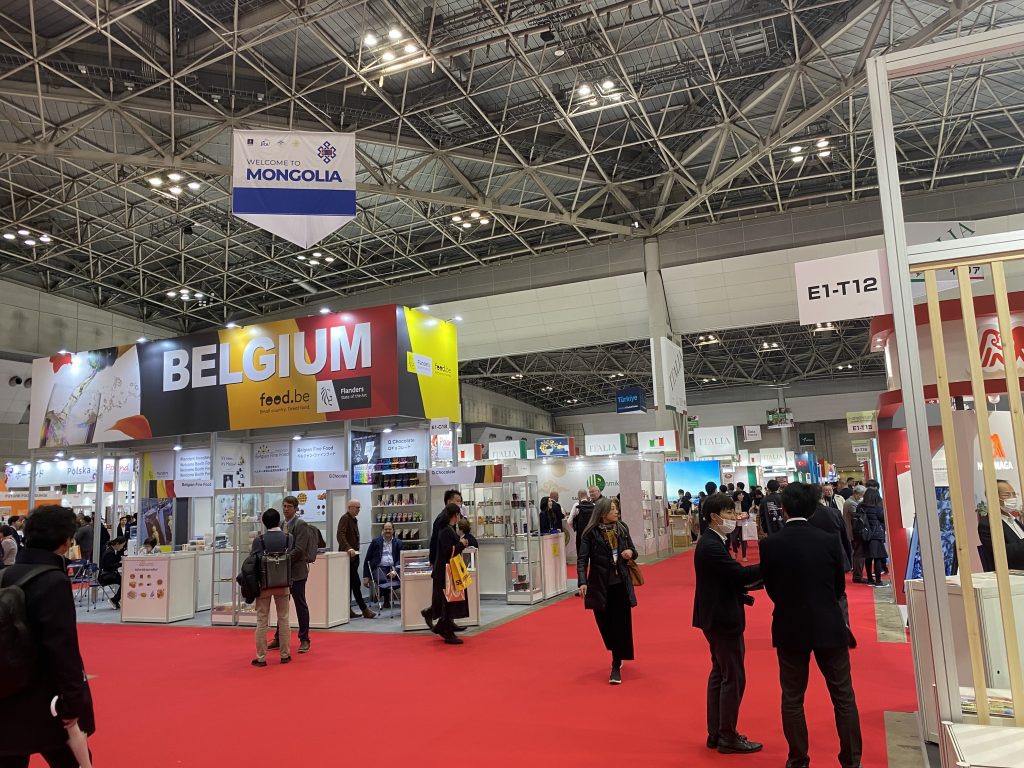On Tuesday, March 5, Foodex Japan 2024 commenced at the Tokyo Big Sight. Boasting over 2300 exhibiting brands, Foodex is the largest of the MICE (Meetings, Incentives, Conferences, Exhibitions) for the food and beverage industry held in Japan. The opening day reported a total of 17,702 registered visitors.
This year’s Foodex hosts a wide array of national pavilions. The European Union Pavilion provides an introduction to the numerous European country pavilions by showcasing highlighted products that are available taste testing, including Italian salami, French roquefort cheese, and Riesling wine from Luxembourg. Throughout East Halls 1-3, Europe dominates the landscape with pavilions spanning from wall to wall and eye-catching signage sporting colors from each country’s national flag.
Italy is the largest of the European pavilions, followed by Spain, Turkey, France, Belgium, Poland, Lithuania, and several others. Attendees can be seen throughout the venue snacking on the popular “Original Belgian fries,” which also offer a variety of condiments including a spicy “Samurai” sauce. Ludwig Winery Ltd., from the Czech Republic, has been exporting its wines to several Asian countries since 2010 and is looking to break into the Japanese market by negotiating with importers at Foodex. Ludwig also showcased its new grape tea and grape flour, which the company hopes will revolutionize the gluten-free industry.
Wine certainly holds a prominent position among the exhibited products. A vast majority of participating companies have brought wine to the table. In particular, Agro-Azerinvest LLC, which represents the wineries of the Qabala region in Azerbaijan, is introducing several wines chosen specifically for Japanese consumers. The flavors are cultivated to appeal to the Japanese palette, and the wines are made affordable to account for the Japanese inclination towards mindful spending. Agroi-Azerinvest has also been invited to attend the SAKURA Japan Women’s Wine Awards for 2024.
A little closer to home, China hosts the largest national pavilion overall. From Asia, Taiwan and Thailand feature impressively-sized pavilions, as well. Sri Lankan exhibitors are showcasing a variety of locally-grown teas. South Korea, capitalizing on the boom in popularity of Korean culture worldwide, has increased its efforts this year. Korean companies have come together with support from the sponsors of the Korean pavilion to cooperatively run a “K-Food Street” section. Fried food, snacks, and alcohol from various companies are available for taste testing in a food stall-styled booth in order to advertise Korean products that are already on sale in Japan, as well as to ultimately promote the spread of Korean culture even further. In addition, TYG Trading Co., Ltd., a Japanese importer of Korean snacks, is using Foodex as a means of advertising their products, as well as connecting with Korean manufacturers.
Not everyone is completely satisfied with the Foodex exhibition, however. Chilean wine exporter Bodegas Tagua Tagua (BTT) was disappointed in the amount of foot traffic by its booth on the first day. Though the company chose to exhibit at Foodex due its status as the largest trade fair in Japan, the BTT representative noted that other Japanese food industry exhibitions have had more significant buyer turnouts, and he was worried about the unusually long 4-day event period. However, the company is pleased to be able to meet known Japanese buyers and conduct pre-scheduled business meetings with customers. BTT remains hopeful for the remaining days of the exhibition.
Foodex Japan 2024 will continue until Friday, March 8, showcasing cuisine and spirits from the aforementioned countries, as well as from North America, South America, the Middle East, Oceania, and beyond.




